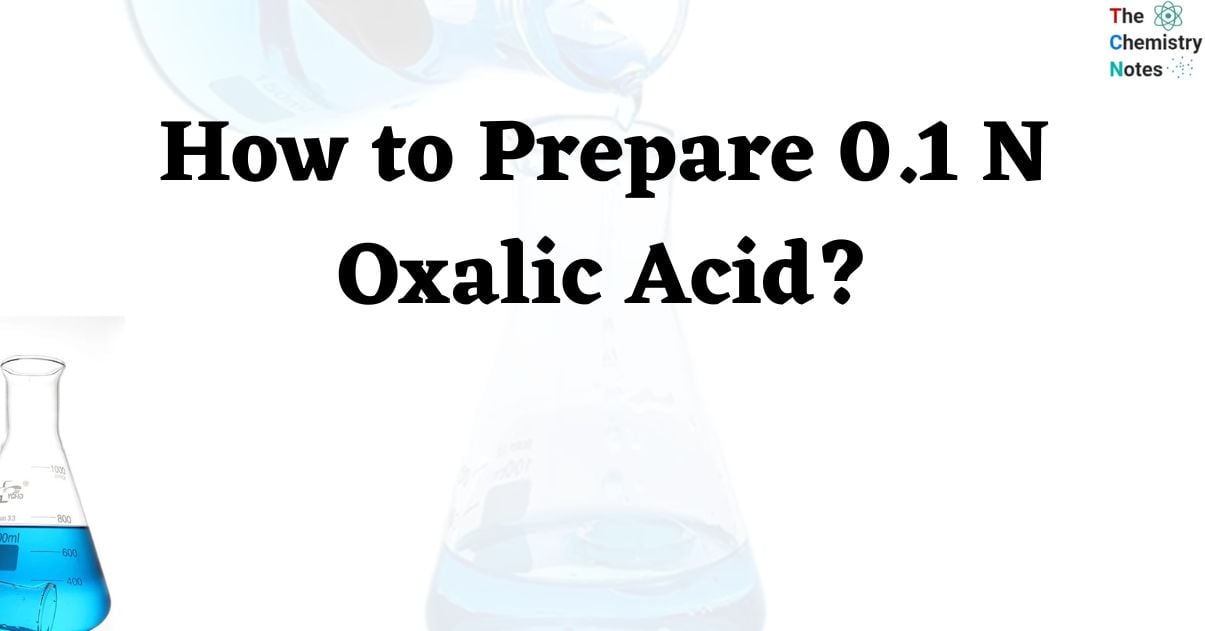Oxalic acid is a reducing agent, and its conjugate base is oxalate. (C2O4)2- Oxalate acts as a chelating agent for metal cations. Oxalic acid is usually found as a dihydrate with the formula H2C2O4.2H2O.

Interesting Science Videos
Equivalent Weight of Oxalic Acid
Hydrated oxalic acid has a molecular weight of 126 grams. Because its chemical formula is COOH-COOH, it is clear that oxalic acid is a dibasic acid capable of donating two H+ ions. As a result, the equivalent weight of oxalic acid may be determined utilizing the following formula:
Equivalent weight = (molecular weight)/(number of equivalent moles)Equivalent mass of oxalic acid = molecular mass of oxalic acid / 2
= 126 / 2
= 63 grams.
Therefore, 63 grams of oxalic acid is the equivalent weight.
Preparation
Since oxalic acid is accessible in its purest form, standard solutions may be produced via the direct technique.
Considering that the equivalent weight of hydrated oxalic acid (C2H2O4.2H2O) is 63, 0.1N solution would have 6.3 g/litre while 0.05 N solution would have 3.15 g/litre. These standard solutions are used to determine the strength of alkali (NaOH and KOH) solutions for which standard solutions cannot be prepared directly.
Preparation Of 0.1 N Oxalic Acid Solution
- Weigh precisely 6.3 grams of oxalic acid, dissolve it in distilled water, and finally fill the volumetric flask with exactly 1.0 liter.
Standardization of 0.1 N Oxalic Acid Solution
- Step 1: All glassware should be sterilized and dried according to regular laboratory procedures.
- Step 2: Add 20 ml of prepared oxalic acid to a conical flask that has been sterilized.
- Step 3: Add 5 ml of sulfuric acid to the flask and heat at the temperature of 70 °C.
- Step 4: Pre-rinse the burette with the solution of potassium permanganate before rinsing it with distilled water.
- Step 5: Start the titration at 0.1N KMnO4 and continue it to the termination point.
- Step 6: The appearance of a pink hue that lasts for more than 30 seconds is the final outcome.
- Step 7: Record the reading. For accurate results, repeat the titration three times.
References
- https://www.researchgate.net/post/How-to-standardize-01-N-NaOH-with-oxalic-acid
- https://www.dairyknowledge.in/sites/default/files/preparation_of_standard_solutions_0.pdf
- https://snscourseware.org/snscphs/files/1618911238.pdf
- https://www.studypool.com/documents/9253443/preparation-of-standard-solutions-of-oxalic-acid
